
03 Mar Creating a Color Story to Design an Apartment
Creating a color story for an apartment helps you develop cohesive and stunning design, especially if you are trying to DIY your apartment design. With the help from our in-house designers, we have provided you a step-by-step guide to create your own turn-key designs and elevate your apartment decor.
Step 1: Choose Your Muse
The first thing you will want to do when creating a color story for your apartment is to come up with an inspiration for your palette. If you are designing a model apartment, I suggest that you spend some time thinking about your prospective residents. Thinking about what they love, what their hobbies are, and what designs they love will help you gather inspiration for the design.
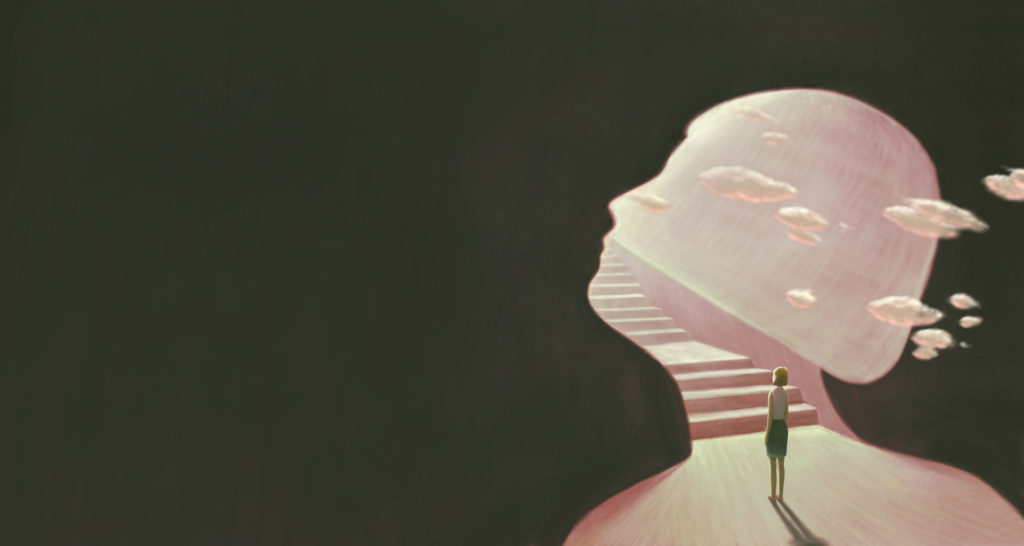
Additional Sources of Inspiration
Inspiration can come from anything you love in your everyday life. Thinking about emotions and feelings that will be associated with the space can influence what colors are used. Inspiration for the space can also come from places, photography, art, or other designers. Designing your space after your favorite piece of art or favorite place on Earth can help get your creative juices flowing for your space.
Step 2: Mood Board It Out
Creating a mood board is an important part to developing your color story. How else are you going to see if it all comes together the way you want it to? In order to do that, you have to find programs to create the mood board that works for you.
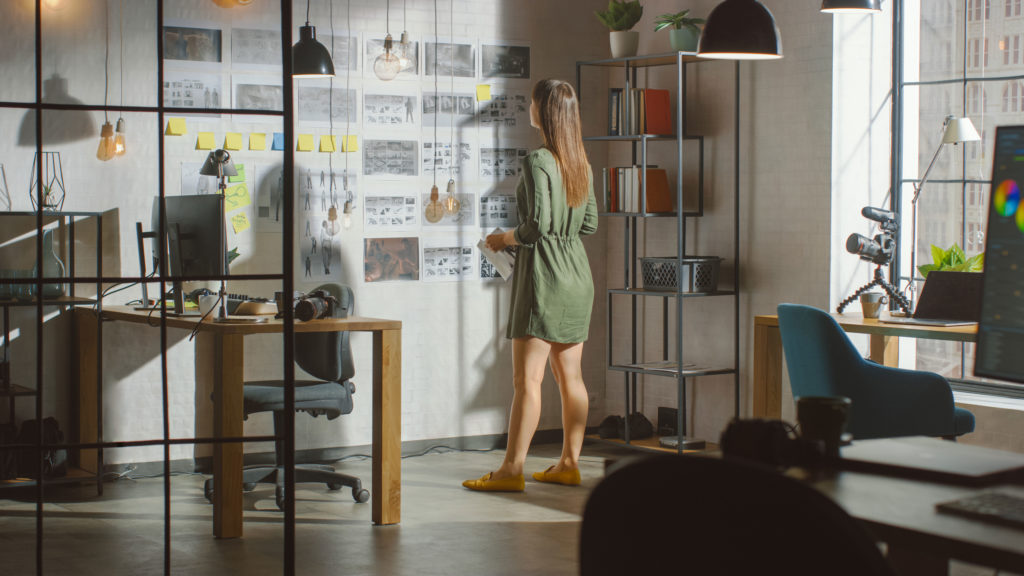
Check Out Adobe Spark... Seriously
This is the recommended application for creating stunning mood boards. It offers great templates and helps you search the internet for free photographs. The best part is, you don’t need an Adobe account to use it! You can create a login via Google, Facebook, or Apple. If you aren’t keen on using Adobe Spark you can use platforms like Canva, Bannersnack, and GoMoodboard. However, Adobe Spark is the recommended platform.
Below is a simple, FREE, mood board I created using Adobe Spark. First, I chose to create a picture collage. I typed “Scandinavian” in the bar that allows you to search for free images. From there, I just selected images that evoked the same feelings I want from my color story.
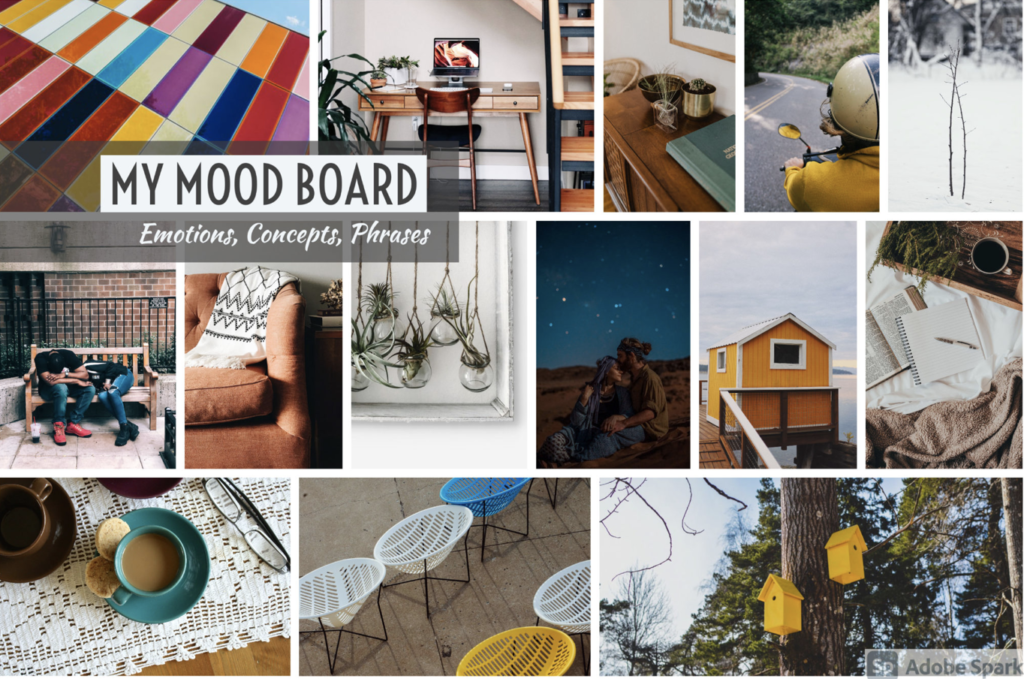
Another Way to Go About It
If you are struggling to summarize how you want to feel from your color story (like I did using the keyword Scandinavian) that’s ok! Typing in phrases will also help you develop a quality mood board. You can type in primary colors to get an idea of the scheme you want to use, or you can type in terms like modern interior design, cozy, and adventure to get better visuals that will fit your aesthetic.
Creating a mood board for your color story can help you cultivate the style of art and decor you want to incorporate in your design. Additionally, mood boards are great for working out resident persona characteristics. Typing in characteristics of your ideal residents helps you cater the mood board directly to what they would like.
Step 3: Putting Your Colors Together
Now that you have your mood board all sorted out, it’s time to create a color scheme! Fortunately there are tons of free color scheme generating websites out there. A few that I recommend based on personal use are Adobe Color CC, Coolers, and Khroma.
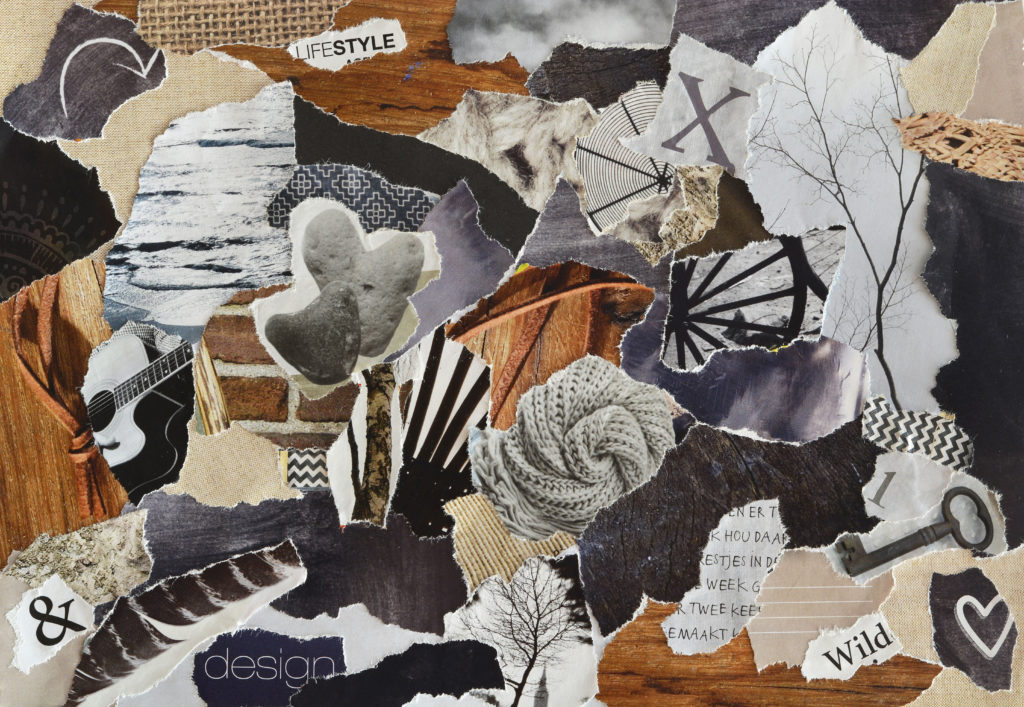
Use Your Board to Find Your Favorite Palette
I am going to use Adobe Color CC in the same browser to create my color scheme from my mood board I created since I am already logged into Adobe Spark. I personally like the free tools provided by Adobe Color CC because they are easy to use and I can save them to a library for future reference. Each inspiration you upload to Adobe Color CC generates five different themes to choose from. The themes include colorful, bright, muted, deep, and dark. Below are some screen captures I took from Adobe Color CC using the Extract Theme and Extract Gradient tools provided.
Colorful

Bright

Muted

Deep

Dark

Playing Around With Gradients
In addition to the five schemes provided by Adobe, I also like to play around with the Extract Gradient tool. This helps me to develop different pallets for a number of uses. Our designers suggest that you always specify a neutral pallet for walls, fixtures, and finishes. Check out the neutral gradient I sourced from the mood board below, as well as a gradient for colorful decor, bedding, and art.
Neutral Vibes

Colors That Pop

Step 4: DesiGN Your Apartment
Once you have your colors locked down, you can begin designing and sourcing. The design boards below reflect the Adobe color scheme, bright. Once you are complete, you will have a full presentation that you can not only follow to ensure design cohesion – but that you can also deliver to your team before procurement and installation to ensure visions are aligned. These images are examples from Emery Flats, a multi-family living space we designed and we couldn’t have done it without a moodboard.
Living
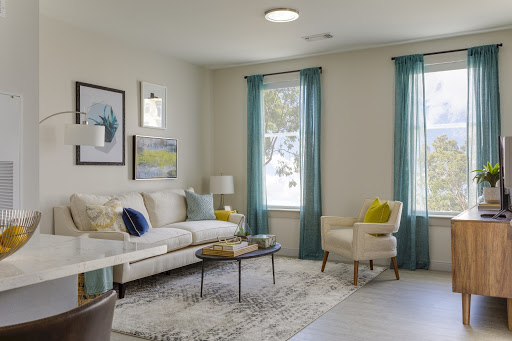
Bedroom
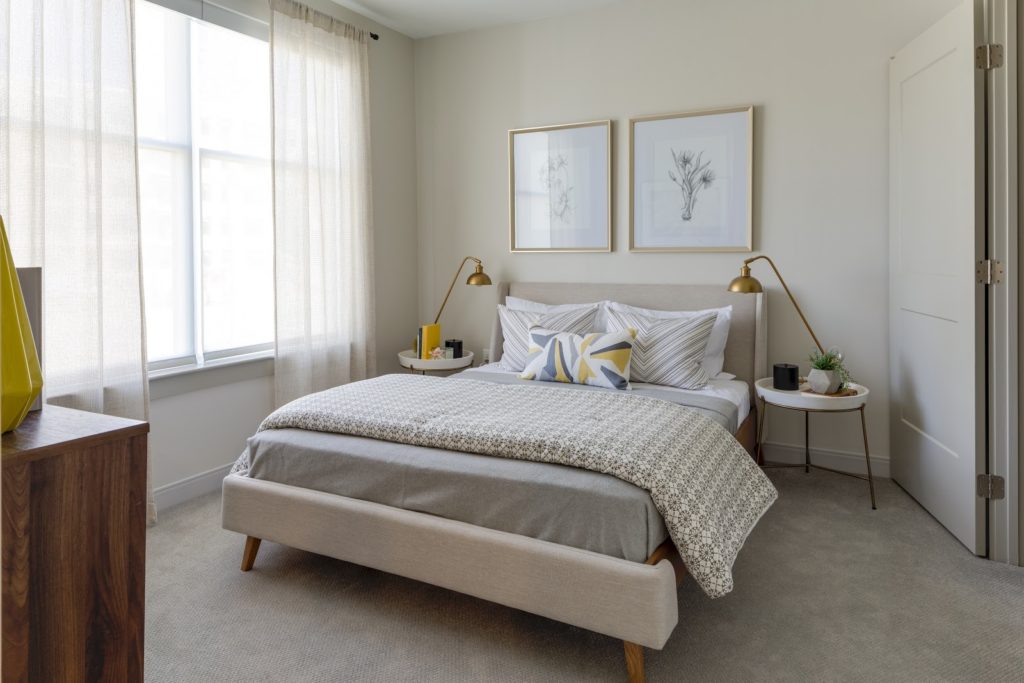
Kitchen and dining
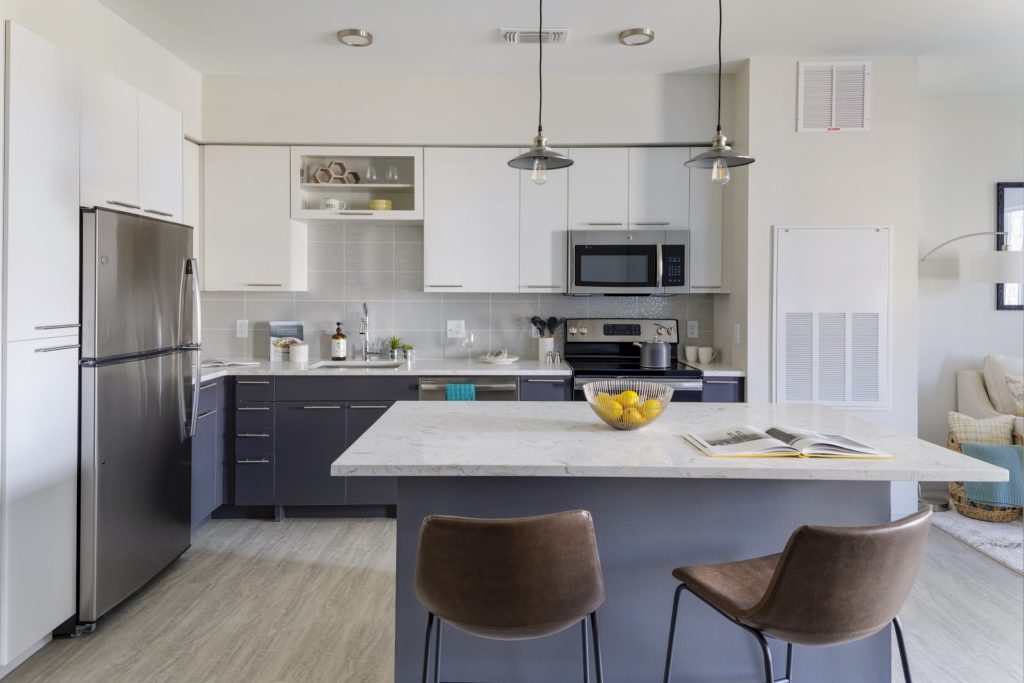
LEARN MORE ABOUT OUR PROFESSIONAL DESIGN SERVICES!
If you are currently designing an apartment for any of your communities, or have future projects in your purview, we can help! Contact us today for more information and download our pricing and information sheet to get started.
Download Pricing & Info Sheet
If you want to learn more about pricing, timelines, and general information on how our turn-key services can work for you, submit your name and email below for a downloadable sheet!
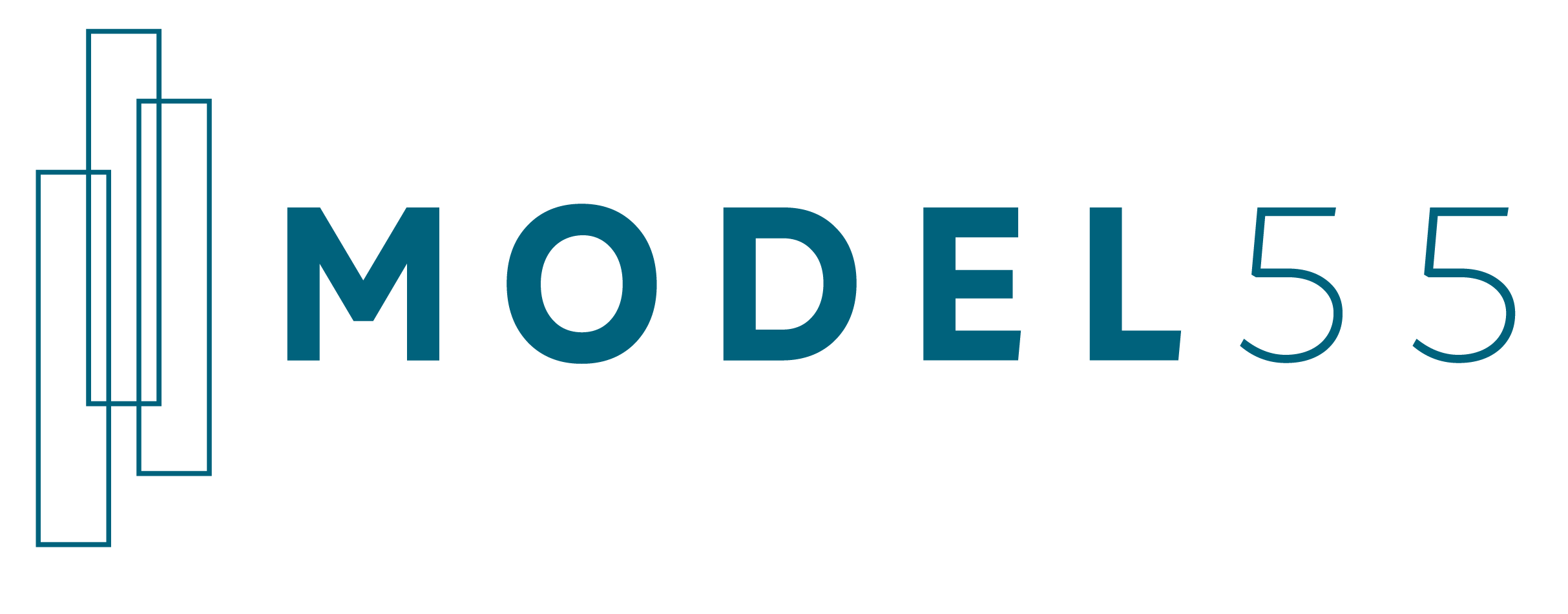
No Comments